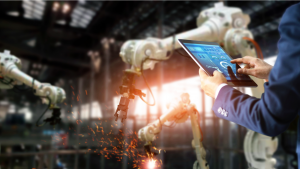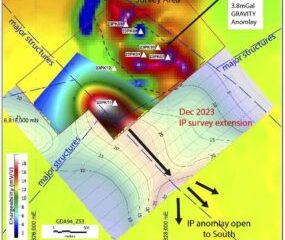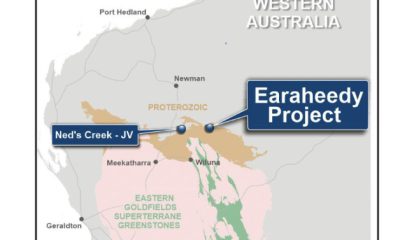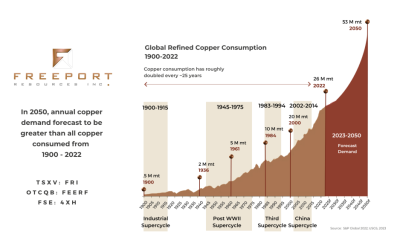Energy & Critical Metals
Automating Mining is the Future
Komatsu was instrumental in getting automated technology up and running at a large copper mine in Chile. When a customer …
Australian Mining.

Komatsu was instrumental in getting automated technology up and running at a large copper mine in Chile.
When a customer in Chile reached out to Komatsu for automation solutions that were reliable, strong and advanced, the company was quick to jump at the challenge.
“The mine is a really good customer of ours,” Komatsu product manager, automation Wesley Taylor told Australian Mining.
“When they first approached us, they had a really big automation goal in mind, both at the surface mining level and on the drill-and-blast side.
“We’ve found that their business has afforded us a really interesting opportunity to trial some of our automation capabilities and they were the first to really jump into the space with us.”
Taylor has been working with the mine for about three years and said it has been great to see the site so keen on implementing the latest technology from Komatsu.
“They have a big focus on safety initiatives and operator comfort,” Taylor said. “For us, that means no operators in the cab so that they’re out of any blast patterns.
“So we went in and offered our technology packages. You can’t just take an autonomous drill, turn it on and expect to work like you have always worked. You need to rework your processes, your handling, and there’s going to be some change management for the customer.
“But they were so keen to get their operators off board and away from that line of fire.”
Komatsu has been focusing on automating drilling services for its customers, and one of its core initiatives is to develop automation that is available for all. To achieve this goal, the company has developed remote control rooms to provide a central location from where equipment can be controlled.
Komatsu is also working to ensure its automation services fall into similar price points.
“Customers might only have one drill, but they want an autonomous solution and don’t want to see a massive investment,” Taylor said.
“But at the same time, if they have, say, 12 drills, we don’t want to see 12 times the investment, we want to see a similar price points, similar capability, no matter how big their fleet sizes.”
Komatsu is committed to ensuring customers can manage how they incorporate automation in their mines.
“Customers can add on two different levels of automation, either on machine smarts or removing that operator from the cab,” Taylor said. “We consider those two parallel technology tracks, and they are not tied to each other.
“Part of that is trying to make sure that the infrastructure costs are as small as we can make it and as light as we can make it.”
This kind of flexibility allowed operators at the copper mine in Chile to communicate what they wanted from Komatsu, which was then able to deliver.
“Automation works in a circular way for me,” Taylor said. “It’s around informing, assisting, and then automating.
“So anything that we automate, the first thing I need to know is more about it. When we look at the future of mining, the forefront is informing data, creating new data, getting data off the equipment and back into a central point for the customer to analyse.
“We can’t all automate the same way because every customer is unique. So how do we make sure that we’re adding without subtracting some of that unique aspect of their operation, so that they don’t see automation kind of hitting their production or hitting some of their KPIs in a negative manner?”
Not only can Komatsu provide automation to mines like the one in Chile, it can also retrofit automating technologies onto older machines to provide a recycling option for the customer.
“We had a customer wanting to apply new technology to a 25-year-old electric rickshaw,” Taylor said. “They saw a large increase in productivity for that old machine, as well as the rapid reduction in damaging events and fatigue.
“So, for me, there is no barrier of only outfitting new technology on new machines; we can go as far back as possible with the customer to make sure that they’re getting extra life out of older machines.
“I really liked that because it doesn’t fit the norm. You think only the new stuff is where you get the cool new technology.
“I’ve been a champion for technology and automation and mining my entire career, and with projects like this Chilean mine, I’m going to continue to do so.”
This feature appeared in the August 2023 issue of Australian Mining.

Uranium Exploration Company Announces Additional Staking in the Athabasca Basin
Source: Streetwise Reports 12/22/2023
Skyharbour Resources Ltd. announced an update from its Canada-based Falcon Project along with additional…
Tesla Launches New Mega Factory Project In Shanghai, Designed To Manufacture 10,000 Megapacks Per Year
Tesla Launches New Mega Factory Project In Shanghai, Designed To Manufacture 10,000 Megapacks Per Year
Tesla has launched a new mega factory…
Giving thanks and taking stock after “a remarkable year”
An end-of-year thank you to our readers, industry colleagues and advertisers before Electric Autonomy breaks from publishing until Jan. 2
The post Giving…












